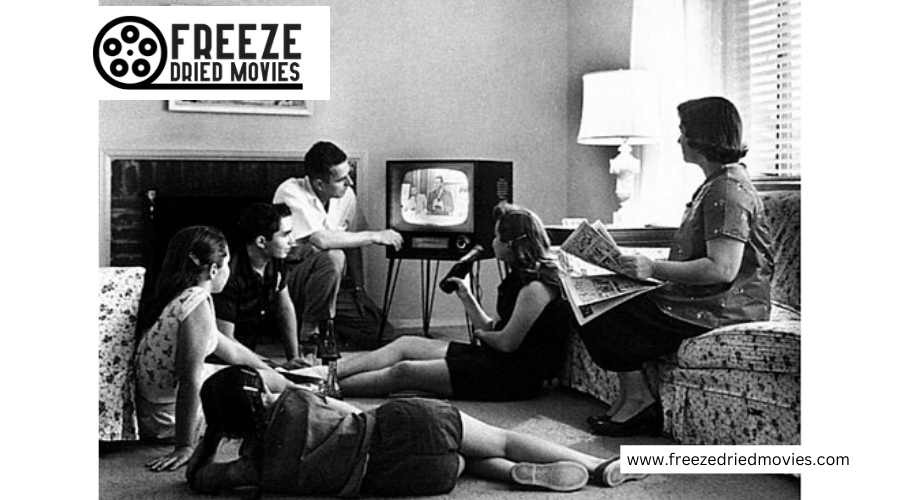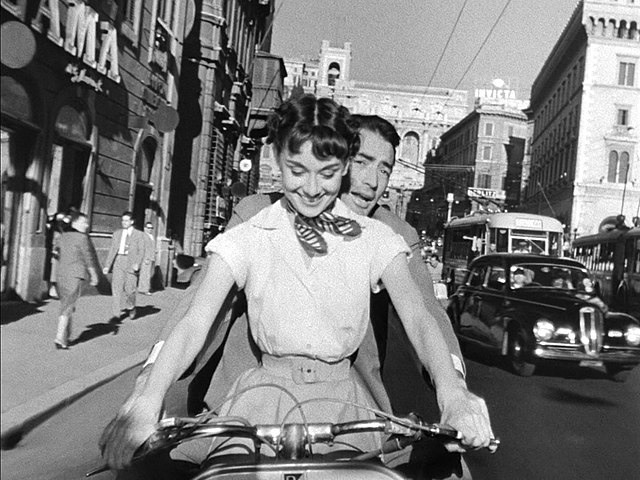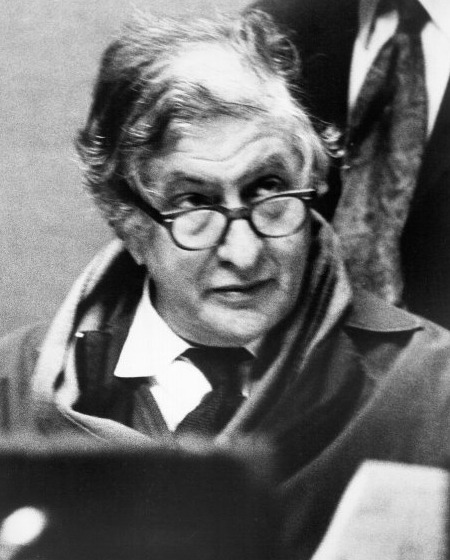You’re stepping into a decade where the Golden Globes truly glittered, spotlighting films and stars that have since become legends. Imagine the allure of ‘Roman Holiday’ capturing hearts, while Marlon Brando’s raw intensity in ‘On the Waterfront’ redefined acting. This era wasn’t just about celebrating cinematic excellence; it marked a significant moment when television began to challenge the big screen, reshaping entertainment’s landscape. Yet, amidst the glitz, certain groundbreaking contributions often flew under the radar. Let’s uncover the hidden gems and pivotal moments that shaped the Golden Globes in the 1950s, sparking conversations that continue to resonate.
Key Takeaways
- ‘Roman Holiday’ and ‘On the Waterfront’ were pivotal films, earning critical acclaim and Golden Globes recognition in the 1950s.
- Audrey Hepburn and Marlon Brando delivered breakthrough performances in ‘Roman Holiday’ and ‘On the Waterfront’, solidifying their iconic status.
- Directors and composers like Dimitri Tiomkin were celebrated, showcasing the era’s focus on both visual and musical storytelling excellence.
- Marilyn Monroe and Kirk Douglas were among the stars who not only shone on screen but also influenced cinema with their production companies.
- The inclusion of television categories by the Hollywood Foreign Press Association marked the Golden Globes’ adaptation to the changing entertainment landscape.
The Rise of Television
As the 1950s rolled in, the Hollywood Foreign Press Association caught on to the rising tide of television, embracing it as a serious contender in the entertainment arena. You saw the evolution of the Golden Globes during this decade, as the HFPA broadened its scope to include television stars and shows, recognizing them alongside film talents. This move wasn’t just a nod to the growing influence of TV; it was a clear acknowledgment of television’s excellence and its burgeoning role in shaping public tastes and opinions.
The introduction of new award categories specifically for television marked a pivotal shift. Suddenly, your favorite TV personalities and programs were receiving accolades that had previously been reserved for Hollywood’s elite. This wasn’t merely about giving out more trophies; it was a statement. The HFPA was declaring that television held a place of importance parallel to film, deserving of its own spotlight for its contributions to entertainment.
This recognition reflected the changing landscape of media and entertainment. It underscored television’s increasing popularity and its potential to captivate audiences just as powerfully as the big screen. For you, the viewer, it signaled the start of a new era where excellence in television was celebrated and awarded, bringing the stars of the small screen into the limelight.
Memorable Films Awarded
You’ve seen the names ‘Roman Holiday’ and ‘Mogambo’ lighting up the marquee, but their Golden Globe wins in the 1950s marked them as unforgettable classics. Behind the camera, stars like Marilyn Monroe and Kirk Douglas weren’t just acting; they were shaping cinema with their own production companies. These films and the achievements of the era’s luminaries set a new standard, proving the 1950s were a groundbreaking time in film.
Iconic Award-Winning Classics
Diving into the iconic award-winning classics of the 1950s, we’ll explore films that left an indelible mark on cinema history. ‘Sunset Boulevard,’ snagging Best Motion Picture Drama in 1951, set a high bar early in the decade. Audrey Hepburn’s enchanting performance in ‘Roman Holiday’ earned her a Golden Globe for Best Actress in a Motion Picture Drama, capturing hearts worldwide in 1954. Meanwhile, Marlon Brando’s riveting portrayal in ‘On the Waterfront’ clinched him the Best Actor award in 1955, cementing his status as a Hollywood legend. These films and performances not only defined the era but also shaped the future of cinema, showcasing unparalleled talent and storytelling that continues to inspire today.
Stars Behind the Scenes
Let’s now spotlight the remarkable individuals behind the cinematic masterpieces that captured Golden Globes in the 1950s. Marilyn Monroe, awarded the World Film Favorite, was a beacon of enduring popularity. Audrey Hepburn, with her Golden Globe for ‘Roman Holiday,’ rocketed to Hollywood stardom, clinching her status as a Best Actress. Grace Kelly’s supporting role in ‘Mogambo’ earned her accolades, further highlighting the era’s exceptional talents. The Actors Studio’s members, including Montgomery Clift and James Dean, redefined acting, contributing to a vibrant, evolving landscape. The Hollywood Foreign Press Association, having overcome its split, united to celebrate these stars, emphasizing philanthropy and recognition. This period was truly a golden era, shaped by remarkable talents both on-screen and behind the scenes.
Groundbreaking Achievements Unveiled
The 1950s Golden Globes revealed groundbreaking achievements, celebrating memorable films that have left an indelible mark on cinema. ‘Roman Holiday’ captivated audiences, snagging the Golden Globe for its drama and Audrey Hepburn’s stellar performance. ‘Some Like It Hot’ broke new ground in comedy, earning accolades for its humor and the performances of Marilyn Monroe and Tony Curtis. Kirk Douglas, a titan of the 1950s films, received recognition for his powerful role in ‘Spartacus,’ showcasing his formidable talent. ‘All About Eve’ swept through the awards, with Joseph L. Mankiewicz winning Best Director, highlighting its lasting impact. The decade’s Golden Globes celebrated the era’s cinematic diversity, from musicals to Westerns, showcasing an innovative storytelling approach that still resonates today.
Iconic Actors and Actresses
In the 1950s, iconic actors and actresses like Audrey Hepburn and Grace Kelly captivated audiences with their award-winning performances. Audrey Hepburn took home a Golden Globe for her unforgettable role in ‘Roman Holiday’ in 1954. Her charm and elegance on screen weren’t just acts; they became her signature, setting a new standard for Hollywood glamour. Grace Kelly, with her poised and graceful performances, was named Best Supporting Actress at the 1954 Golden Globes for her role in ‘Mogambo’. Her talent and beauty made her a beloved figure in the film industry and beyond.
Marilyn Monroe, another luminary of the era, received the World Film Favorite award at the 1954 Golden Globes. Her magnetic screen presence and iconic roles cemented her status as a cultural icon, making her one of the most celebrated actresses of the 1950s. These women weren’t just stars; they were trailblazers who left an indelible mark on Hollywood. Their achievements during this golden era of cinema showcased their unparalleled talent and helped shape the future of the film industry.
Breakthrough Performances
Diving into the 1950s, breakthrough performances by actors like Marlon Brando and Audrey Hepburn reshaped Hollywood’s landscape. This era, rich in cinematic history, saw the rise of stars who’d become legends, their work lighting up the screen and earning them Golden Globes. It was a time when movies weren’t just entertainment; they were art, and these actors were its most brilliant creators.
- Grace Kelly in ‘Mogambo’ wasn’t just acting; she was living her role, earning her a Golden Globe for Best Supporting Actress in 1954. Her elegance and depth of character set new standards.
- Marlon Brando’s role in ‘On the Waterfront’ was a masterclass in acting, marking a pivotal breakthrough moment that would define his career and the craft itself.
- Audrey Hepburn in ‘Roman Holiday’ wasn’t just a performance; it was a revelation. Her Golden Globe for Best Actress in 1954 was a validation of her undeniable charm and talent.
- James Dean in ‘East of Eden’ captured the raw, tumultuous spirit of youth like no one else, solidifying his status as a symbol of the 1950s.
- Judy Garland in ‘A Star is Born’ showcased not just her incredible talent but her resilience, earning her well-deserved recognition.
These breakthrough performances in the 1950s weren’t just about winning Golden Globes; they were about setting the stage for the future of Hollywood.
Directors in the Spotlight
Shifting focus to the directors, the Golden Globes introduced a category in 1943 to celebrate the visionaries behind the camera, spotlighting their essential role in cinema’s magic. By the 1950s, the Director category had evolved, showcasing four nominees, including those sometimes overlooked by the Oscars. This expansion underscored the Golden Globes’ unique stance, often diverging from the more traditional Academy selections.
You’ll notice that typically, those nominated for Best Director at the Golden Globes have their films in the running for Best Picture, tying the success of a movie directly to its director’s vision. Yet, it’s intriguing that only nine films have snagged a Director nomination without any other nods, highlighting those rare instances where a director’s singular vision is recognized even if the film itself doesn’t receive broader acclaim.
Winning Best Director at the Golden Globes isn’t just a pat on the back; it often preludes further glory. Most winners don’t just walk away with one trophy; they usually snag another, proving that excellence in directing is frequently a harbinger of additional accolades. This trend underscores the director’s pivotal role in crafting award-worthy cinema, a truth that the Golden Globes has celebrated since the category’s inception.
Music and Scores
Let’s turn your attention to the heart-stirring scores and melodies that defined films of the 1950s. You’ll discover how award-winning composers like Dimitri Tiomkin and Alfred Newman set the stage for unforgettable cinematic experiences. From ‘Singin’ in the Rain’ to ‘The Sound of Music’, these soundtracks didn’t just complement the stories—they became legends in their own right.
Iconic 1950s Film Scores
Exploring the 1950s, you’ll find film scores that not only defined movies of the era but also left a lasting impact on the music industry. These golden, iconic scores transported audiences, evoking a range of emotions with their powerful melodies and innovative orchestration.
- Max Steiner’s dramatic themes for A Streetcar Named Desirecaptured the raw emotion of the film.
- Dimitri Tiomkin added tension and urgency to High Noonwith his score.
- Elmer Bernstein’s jazzy tunes for The Man with the Golden Armintroduced sophistication.
- Bernard Herrmann’s haunting score for Vertigobecame synonymous with suspense.
- Franz Waxman’s music for Sunset Boulevarddepicted the glamour and darkness of Hollywood’s Golden Age.
Each score left an indelible mark, shaping how we experience film.
Award-Winning Composers
The Golden Globes of the 1950s celebrated the era’s most talented composers, awarding those whose scores brought films to life. Dimitri Tiomkin set the bar high in 1953 with his win for ‘High Noon’, capturing the tension and drama of the Wild West. Then, Victor Young took you on a global adventure in 1956 with his award-winning score for ‘Around the World in 80 Days’. The romance and exotic allure of ‘The King and I’ wouldn’t have been the same without Alfred Newman’s compositions, earning him the Golden Globe for Best Original Score in 1957. Finally, Miklós Rózsa’s epic music for ‘Ben-Hur’ in 1959 showcased the power of a score to elevate a film’s grandeur, rounding out a decade of remarkable achievements in film music.
Memorable Musical Moments
Building on the foundation of award-winning composers, memorable musical moments of the 1950s further captivated audiences with unforgettable scores and songs. The decade’s musical films, brimming with iconic scores and vibrant performances, left a lasting impact that resonates even today.
- Gene Kelly splashing through puddles in Singin’ in the Rainset hearts racing.
- Judy Garland’s emotive power in every song she belted out.
- Leonard Bernstein’s West Side Storymerging classical and contemporary, crafting a musical masterpiece.
- The enchanting melodies of The King and Itransporting viewers to a distant land.
- Fred Astaire’s effortless elegance, dancing into the hearts of millions.
These moments weren’t just entertainment; they were musical landmarks, defining an era.
Behind-the-Scenes Talent
Explore the world of behind-the-scenes talent where individuals like Franz F. Planer greatly shaped the 1950s film industry with their creative genius. Planer, a celebrated cinematographer, became a pivotal figure in crafting the visual narratives that captivated audiences worldwide. His work didn’t just complement the story; it elevated the entire cinematic experience, proving that behind-the-scenes talent was as essential as the stars on screen.
Imagine the bustling Sunset Strip in the 1950s, where the 8th Golden Globe Awards took place at Ciros nightclub, a hotspot for Hollywood’s elite. It was here that the industry celebrated not just the faces in front of the camera but also the unsung heroes like Planer. Their contributions were instrumental in the success of films such as ‘The Next Voice You Hear…’, a project that underscored the importance of faith and communication, and showcased the depth of talent behind the camera.
Yet, despite their fundamental role, these artists often remained out of the limelight. The Cecil B. DeMille Award and similar honors began to acknowledge their contributions, but the true extent of their influence can only be measured by the timeless appeal of the films they helped create.
Frequently Asked Questions
What Movie Has the Most Golden Globe Wins?
It’s ‘One Flew Over the Cuckoo’s Nest’ with six wins, including Best Picture, Best Actor, and Best Actress in 1976.
Which Films Have Won Best Picture at the Golden Globes and Oscars?
Titles like ‘On the Waterfront,’ ‘Around the World in 80 Days,’ and ‘Gigi’ did just that across various genres.
Which Film Was Voted at the Golden Globes Award as the Best Drama?
‘A Place in the Sun.’ Starring Montgomery Clift and Elizabeth Taylor, it captivated audiences with its powerful storyline.
How Did the Golden Globes Do in the Ratings?
The first live telecast was in 1958, making it hard to compare to today’s standards.
Conclusion
In the 1950s, the Golden Globes truly shone, embracing cinema’s finest and welcoming TV into the fold. You’ve seen how iconic films and stars like ‘Roman Holiday’ and Marlon Brando captivated audiences, marking an era of unforgettable storytelling and performances. Directors and composers stepped into the limelight, showcasing their genius. This decade wasn’t just about glitz; it was a pivotal moment that celebrated and shaped the future of entertainment, proving that great art endures.





